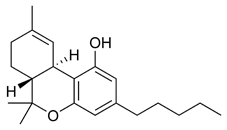LESLIE L. IVERSEN. The Science of Marijuana. New York NY Oxford University Press, 2000. vii + 283 pp., 25 figs., 7 tbls., $ 29.95 (Cloth).
This book is informative, well written and nicely organized. It provides concise information about the pharmacological and the therapeutic potentials for cannabis. The book contains seven chapters, a preface, references and an index. The contents of this book can be summarized as follows:
In Chapter 1 (Introduction), the author writes of the origins and growing techniques of cannabis, as well as the morphology of male and female plants. The preparation of cannabis oil and an explanation of the different market forms for cannabis (loose material, hash and hash oil) are also included. Modes for the consumption of cannabis preparations in order to experience their psychoactive effects (smoking, eating and drinking) are thoroughly discussed. At the end of Chapter 1, Iversen provides a brief history of the cannabis plant.
Chapter 2 recounts the discovery of D9-tetrahydrocannabinol (THC) and its structure determination. The synthesis of THE and the structure activity relationship for the different cannabinoids are also provided. Iversen discusses the bioavailability of THC through the different routes of administration (eg., smoking, oral) and how THC works in the brain through the cannabinoid receptors. He includes a discussion of the different physiological effects of THE on the heart, blood vessels, immune system, sex hormones, reproduction, pain sensitivity, motility and posture.
Chapter 3 explains in detail the physiological and psychological alterations in brain function as a result of administering marijuana. This section also shows the affected site in the brain upon which marijuana takes action. Finally, the repeated use of marijuana possibly leading to tolerance and dependence is discussed.
Chapter 4 describes the history for the use of marijuana in folk medicine. Two synthetic cannabinoids, dronabinol and Nabilone, are already available by prescription to patients on both sides of the Atlantic. Iversen explains several of the medical targets for cannabis: treatment of nausea and vomiting associated with cancer chemotherapy; counteract the loss of appetite and wasting syndrome in AIDS; and treatment of multiple sclerosis, glaucoma, epilepsy, bronchial asthma, mood disorders and sleeplessness.
Chapter 5 gives a good discussion concerning the safety profile of THC. Iversen explains the effects of long-term exposure to cannabis. Chronic use may affect pregnancy, and in some users, precipitate mental illness. Consequently, patients with cardiovascular diseases are not suitable subjects for cannabis-based medicines. Chapter 6 discusses the recreational use of cannabis in different places of the world. Chapter 7 discusses the future of marijuana in the twenty-first century.
This book is written in a way that invites everyone to read it. It is appropriate reading material for those interested in cannabis, regardless of their background or knowledge of the subject. The price of the book is also very reasonable. I heartily recommend this book to all individuals with an interest in the science of cannabis.
Samir Anis Ross
The University of Mississippi
Copyright American Association of Colleges of Pharmacy Fall 2000
Provided by ProQuest Information and Learning Company. All rights Reserved



